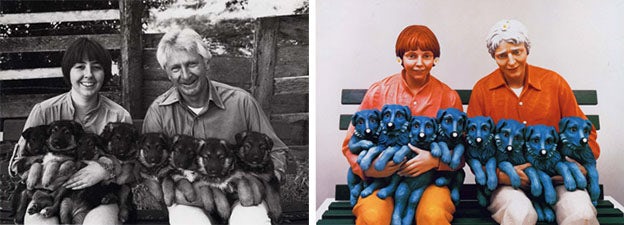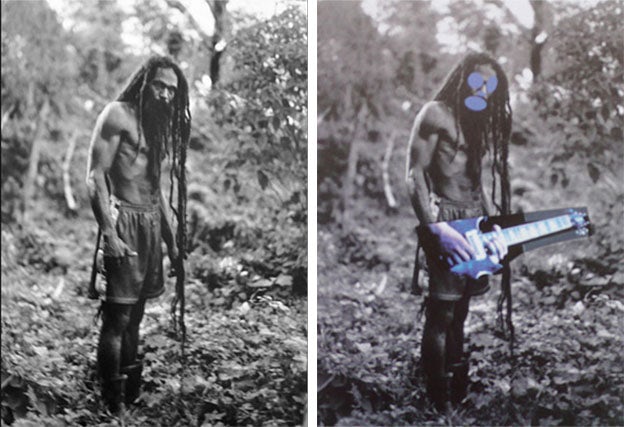The Line Between Inspiration and Imitation
One significant case of copyright infringement was Rogers vs. Koons. In 1985, photographer Art Rogers took a picture of two people holding a bunch of puppies. Rogers sold the photograph for greeting cards and other print products. In 1988, artist Jeff Koons created a statue after being inspired by Rogers's photography. Koons sold some of the statues and made a lot of money off them. So, naturally, Rogers sued Koons for copyright. Koons' defense was claiming fair use “by parody.”
The court concluded that because anyone could recognize that Koons’ version was a copy of Rogers, Koon’s defense would be rejected. This brought up a lot of questions like is photography a creative form of art, how much of others' ideas can you borrow until it becomes copyright, and is doing something similar to what Koon did subtract value from the original artist?
 |
| Roger's photograph (left) and Koon's statue (right) |
One controversial case of copyright infringement was Cariou vs. Prince. Appropriation artist, Richard Price was known for using others' photographs, editing them, and giving them a new meaning. In one of Prince’s exhibits, he used 41 photographs taken by the photographer, Patrick Cariou. Prince argued that it was fair use because his additions to the pictures gave the art new meaning.
In 2011, a judge, originally, ruled in favor of Cariou. The judge stated that the changes made weren’t compelling enough to change the meaning. Two years later, in 2013, the case was overturned and the same judge ruled in favor of Prince. This case was controversial because viewers interpret all art differently than what either the artists intended.
 |
| Cariou's photograph (left) and Prince's artwork (right) |
In 2016, a jury ruled against the family in favor of Led Zeppelin. Unsatisfied with the ruling, Wolfe’s attorney appealed and in 2018, another ruling was made in favor of the estate. Zeppelin, also, unsatisfied with the results made an appeal that same year and got a rehearing in September. The judges ruled in favor of Zeppelin, again. The judges stated that they wouldn’t broaden protection to just a few notes, stating “a four-note sequence common in the music field is not the copyrightable expression in a song.”
This case has been controversial because it contradicts a verdict that was concluded in 2015. Robin Thicke and Pharrell Williams’ 2013 song “Blurred Lines” was found guilty of copyright infringement on Marvin Gaye’s 1977 “Got to Give It Up.” Check out the videos below. Do you think the final verdict was correct?

No comments:
Post a Comment